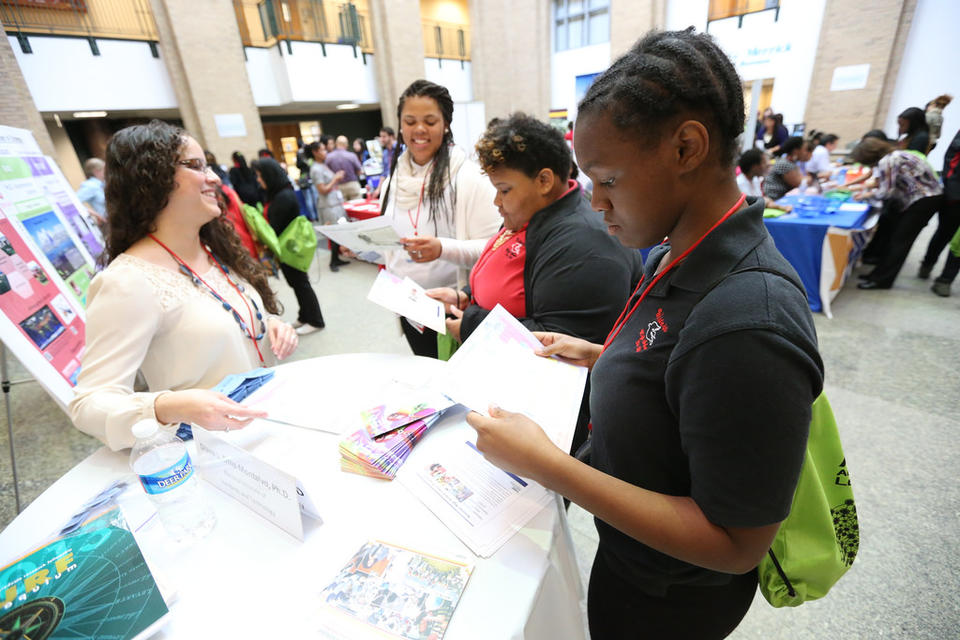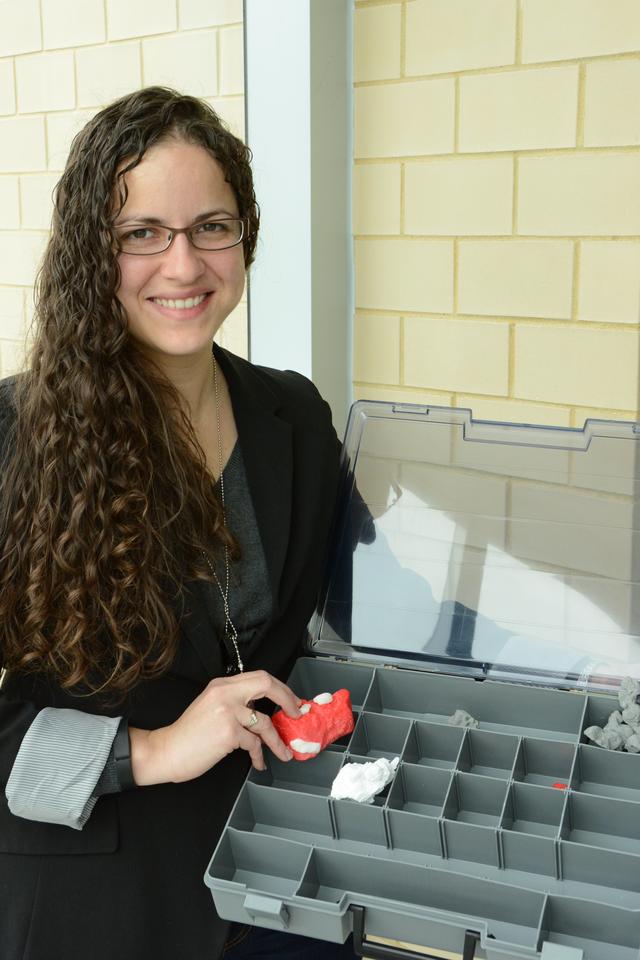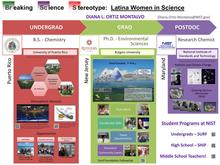Taking Measure
Just a Standard Blog

Interacting with other minority students at the ATLAS STEM college and career conference.
I’m from a town called Aguadilla on the northwest coast of Puerto Rico—about a 2.5-hour drive from San Juan. My parents grew up in poverty. My mom was one of nine siblings and education was not a priority at the time. She had big dreams of studying, getting a degree, and improving herself, but she was faced with too many obstacles and could not fulfill her dreams. My dad and his three siblings grew up deep in the mountainous region and worked the land as traditional “jíbaros.” My dad had the opportunity to study agronomy in college, but he was drafted for the Vietnam War and had to pause his education. They both understood the value of a good education and, although their marriage did not last long, they made sure that my brother and I went to college.
Being the first person in my family to obtain a Ph.D. is a source of great pride, but I had to overcome many challenges and make many sacrifices along the way. Like me, many minority students who embark in this journey have no one in their families or close to them with whom they feel comfortable asking questions about what it takes to go to grad school. Don’t get me wrong: It has been one of my most rewarding experiences, but I just wish I had gotten a “heads-up” about all the things that were coming my way so that I could’ve been better prepared. Someone to tell me that the road ahead will be difficult, but that I will prevail, and it’s all going to be just fine.
My academic journey eventually took me far from the comfort of my home and my dear friends and loving family, but it all started in Puerto Rico. Growing up I wanted to be a cardiovascular surgeon … until I discovered that I couldn’t stand the sight of blood—not ideal if you want to pursue a career in medicine. After taking chemistry in high school and learning about how chemistry was in everything from working chemists during a tour of the local Hewlett-Packard factory, I decided that’s what I wanted to study. While I was working on my bachelor’s at the University of Puerto Rico, Río Piedras Campus, I had an opportunity that would change my life—the opportunity to do real scientific research on air pollution—a subject that would become my passion and set the stage for a career in aerosol research.
This initial opportunity opened the door to many enlightening new experiences. All of the sudden I found myself leaving Puerto Rico for the first time to present my research—it was my first time away from family, first time on an airplane, first time at a conference, first time speaking publicly IN ENGLISH—it was exhilarating and a little scary! Luckily, I found support and resources for my scientific and professional development at conferences tailored to meet the needs of students like me. My experiences as an undergraduate and my professors’ recommendations convinced me that I should pursue a Ph.D. in the United States. So, after I received my B.S. degree I moved to New Jersey to start my graduate studies in the field of air pollution science and technology at Rutgers University. It was a huge culture shock, and it took me a while to get used to my new life as a graduate student. One of the things that helped me the most was to serve as a student ambassador recruiting and mentoring other students from underrepresented populations.
First, I helped Rutgers recruit students at the University of Mayagüez in Puerto Rico. There, I gave a presentation about the department I worked in, my funding, and my life as a Puerto Rican graduate student. I also met individually with students and discussed their future plans. I enjoyed the opportunity to encourage them and was really moved by how grateful they were for my help. The success of this trip led to another recruiting invitation to a conference tailored to prospective minority graduate students. It was great to be able to give these students, many of whom probably were the first in their families to consider graduate school as well, the guidance I wish I had received when I was considering pursuing a Ph.D.
In addition to recruiting, I served as a student ambassador for a collaborative workshop on environmental sciences and engineering in Guangzhou, China. After spending a week with the Chinese students, I realized how strongly I felt about helping students in general and decided to incorporate outreach activities into my career. Around that same time, I began mentoring an undergraduate student from Puerto Rico. I helped her design experiments, taught her scientific concepts, and encouraged her to pursue graduate school. Eventually, I convinced her, and she began graduate studies in my department. This experience made me realize the potential I have as a mentor.
After completing my Ph.D., I began a two-year postdoctoral position as part of the NRC Research Associateship Program at NIST’s campus in Gaithersburg, Maryland. I am currently a research chemist at NIST continuing my research on atmospheric particles and working on new projects related to particle analysis and characterization.
During my relatively short time at NIST (I recently celebrated my 3-year anniversary!), I have been a part of a number of STEM outreach events where I promoted NIST’s SURF program, SHIP program, and the Summer Institute for Middle School Science Teachers. Some of these events include:
- Congressional Hispanic Caucus Institute’s (CHCI) “Ready to Lead (R2L) Mentoring Power Hour”

My favorite things to show during my outreach interactions are my 3-D printed handheld models of the kinds of microscopic particles you would find floating in the air. Their weird shapes, and the fact that we are breathing them in as we speak, naturally gets people curious. It has proven to be an effective way of highlighting, both visually and palpably, the complexities in the shape and composition of the particles around us. It also provides a newer and more interactive way of discussing my research and motivating others to learn more about it. At the same time, it opens up discussions about emerging technologies, e.g., additive manufacturing, commonly known as 3-D printing, and how they can be used to engage students and inspire their creativity.
Overall, I have learned from my experiences that minority students have great potential and sometimes just need guidance and reassurance from people they can relate to. Moving forward, I will continue to encourage minority students to pursue STEM careers, and I strongly encourage my fellow scientists and engineers to join me in this rewarding effort. NIST’s involvement in STEM outreach and the opportunities it gives its researchers to participate is one of the many reasons why I love working at NIST, and I look forward to the many experiences that await me.
If you have questions about upcoming events or are a student who’s thinking about pursuing a degree in the sciences, please send me an email. I’d be happy to help out.
¡Espero poder serles de ayuda!
About the author
Related posts
Comments
- Reply






